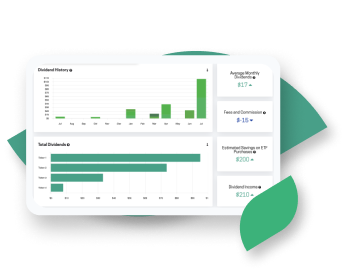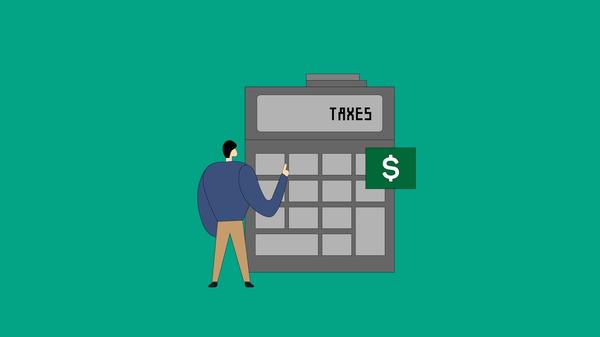Are you ready to take full control of your own investing? Then passive investing might be for you. As an investment strategy, passive investing aims to maximize returns while minimizing buying and selling. Passive investing also allows you to control your risk tolerance more broadly and not spend all day researching and stock picking.
To be an effective passive investor, you’ll have to strike a desired asset balance in your portfolio - your portfolio allocation. However, as markets change, so will the value of the assets in your portfolio and as a result, your allocation will change, too. When this happens, your portfolio requires portfolio rebalancing.
In this guide, we’ll explore what portfolio rebalancing is, how it works, when you should rebalance and how (and why Excel is a bad choice), and the numerous benefits. Let’s get started!
What is Portfolio Rebalancing?
Your portfolio is made up of a combination of investment assets. Each asset takes up a percentage of your portfolio, totaling 100%. The percentage each asset is allocated reflects your goals and risk tolerance for your portfolio.
Portfolio rebalancing is a way of adjusting your investments so that they stay in line with your goals. By regularly rebalancing your portfolio, you can reduce risk and make sure that your assets are allocated according to your individual investment objectives. The process of rebalancing also allows you to take advantage of any market changes or opportunities that may arise.
Take for an example a passive investing portfolio with an original target asset allocation of 50% equities ETFs and 50% bond ETFs. If your bond ETFs prices were to increase, it would increase the proportion of your portfolio dedicated to bonds above the 50% you are comfortable with. This would be considered an imbalanced portfolio, in need of portfolio rebalancing.
How Rebalancing Works
Rebalancing involves evaluating your current investment mix (equities, bonds, individual assets) and adjusting it so that it remains consistent with the goals of your portfolio.
1. Sell some of your overweight assets and use that cash to buy underweight assets.
2. Contribute to your investment portfolio consistently and keep buying the underweight assets.
Some investors rebalance their portfolios by only investing new cash and purchasing more of an asset that has seen its allocation percentage dip below your goal (called ‘underweight’). In some cases, the balance is so off that investors may also sell off overweight assets to bring down the allocation of an asset inline with their goals - though this can incur costs in brokerage fees.
How Often To Rebalance Your Portfolio
The frequency at which you should rebalance will depend on several factors such as the type of investments held in the portfolio, market performance, and risk tolerance level. Traditionally, most professional investors recommended either a quarterly or semi-annual review of portfolios, or readjusting whenever the imbalance decreases to an unacceptable level (90% of the desired allocation is often used) - this requires for investors to keep a close eye on their portfolios and follow rigid schedules to not forget to review and adjust.
With Passiv as your portfolio rebalancing tool, this process is automated so your portfolio can remain balanced with little downtime. You don’t have to watch your schedule and be beholden to logging in to your brokerage at regular intervals before slogging through your Excel spreadsheet to make updates.

Set yourself free from your spreadsheet
Passiv frees you from the manual processes of portfolio rebalancing to save you time and effort
Get Started
How To Balance Your Portfolio
Rebalancing is a simple process but traditionally requires discipline and consistency if done manually.
Continuing with the example above, to complete portfolio rebalancing where your bond ETFs increased above the 50% allocation you originally intended, you may sell some bond assets (driving down its total allocation) or buy some equities assets (driving up its allocation). This would realign the percentages back to the original target allocation of 50/50.
Traditionally, individuals had to do this entire process manually. This would include having spreadsheets offline in Excel or a similar program that track their holdings. Investors would then need to manually update the current prices of each asset and create equations to reflect any changes.
Fortunately, Passiv can be used as a portfolio rebalancing tool that gets you out of Excel and automates the entire portfolio rebalancing process.
Why Is It Important To Rebalance Your Portfolio?
In simple terms, portfolio rebalancing as a practice allows you to more easily maintain a consistent strategy with a big picture in mind, ensuring discipline and consistency.
Regularly monitoring and adjusting investments through portfolio rebalancing helps manage overall risk by making sure assets remain allocated according to one's individual investment objectives or financial goals - whether they be short-term or long-term focused strategies. It further ensures your portfolios are performing at an optimal level.
Portfolio rebalancing also effectively encourages you to take a “buy low, sell high” strategy. By rebalancing when markets have become overvalued or undervalued, you can take advantage of those market fluctuations and trends in order to maximize your returns.
When markets become overvalued, rebalancing can help take your profits on holdings and reinvest them in areas of the market that have lagged behind. Conversely, when certain sectors are undervalued, rebalancing can help you take advantage of lower prices by increasing their exposure in those areas of the market. By reminding you to buy low and sell high, rebalancing helps protect you from emotion-driven investing decisions that could negatively impact long-term returns, essentially forcing you to become a more disciplined investor.
Taking a proactive approach towards managing a portfolio through regular rebalances can help investors preserve wealth over time. By maintaining proper asset allocations you can protect against large losses due to over-concentration in any single security or sector during periods of market volatility - while also potentially providing opportunities for additional gains depending on market conditions.
Risks Of Portfolio Rebalancing
If the account you’re rebalancing is not tax-advantaged, you may be on the hook for capital gains taxes for any assets you sell. The less you sell, the lower your taxable amount. In Canada, half the value of any capital gains is taxed at your marginal rate (meaning, your highest personal tax rate).
By using Passiv, which calculates only Buy trades by default, you’ll save on trading fees and avoid triggering capital gains unneccessarily. And if you ever need to do a “full” rebalance, you can turn on Sell calculations and rebalance your portfolio in seconds.
Passiv’s automated calculations are especially helpful if you have complex investments.
For example, maybe you’ve got your assets in different types of accounts for tax efficient investing. If this is the case, you likely treat your portfolio (across all accounts) as one big pot. With Passiv, you can group these accounts together and Passiv will keep you balanced across all of them.
Conclusion
There are many benefits associated with regularly reviewing and readjusting one’s investments through portfolio rebalancing - namely reducing risk levels while also potentially increasing returns if done correctly over time.
When taking into account market conditions at any given point in time along with one’s individual financial goals going forward into the future as well as any other unique factors involved based on each investor's particular situation, portfolio rebalancing is an essential component for anyone serious about maximizing returns from their investments over time if they are a passive investor seeking long-term stability.
No matter what types of markets you find yourself operating within going forward, portfolio rebalancing will be a crucial component of your passive investor playbook.


